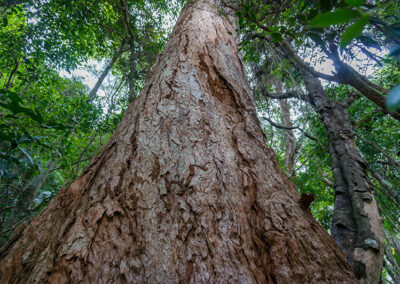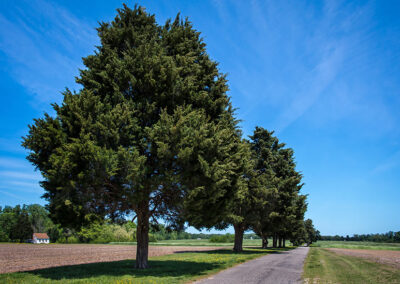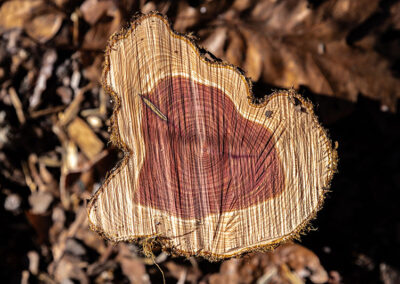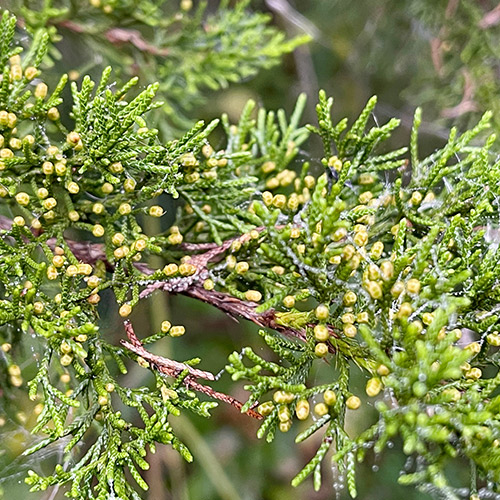
Red Cedar

Pollen Type: Tree
Cross-Reactivity: Other Cedars
HS Allergy Extract: Cedar, Red
Family: Cupressaceae
Genus/Species: Juniperus virginiana
Common Names: Red Cedar, Eastern Red Cedar, Virginian Juniper, Eastern Juniper, Red Juniper
Distribution: Throughout U.S. East Coast, West to Nebraska. Also found in Oregon.
Locations: Limestone bluffs and glades, wood margins, fields, pastures, and fence rows. Tolerates soils and growing conditions, from swamps to dry rocky glades; intolerant of constantly wet soils. One of the first trees to repopulate cleared, eroded, or otherwise damaged land. In many areas, it’s considered an invasive species.
Pollinating Period: February–May, depending on location.
Pollination Method: Wind-pollinated
Description: Despite its common name, Red Cedar is a juniper tree. This evergreen has a short trunk and can appear as a bush or column-shaped tree, reaching 60’. Its bark is reddish-brown and peels in long thin strips, often with ashy gray color appearing underneath. Red Cedar has two types of leaves. The younger leaves are spreading prickly leaves on young shoots and seedlings. The others are tightly overlapping scale-like leaves on the mature branches. The scale-like leaves are 1/16”-3/16” long, sharp, and arranged in pairs or whorls of three. Its foliage is sticky and appears sage green to blue-green in the summer and turns bronze to yellow-brown in winter. Red Cedar is typically dioecious, meaning that male and female cones grow on different plants. Males trees produce pollen cones about the size of a grain of rice, yellow-brown in color, and appear in groups at the tips of branches. Female trees grow berry-like seed cones 1/4” in diameter, gray to blackish-green with a white wax covering. Red Cedar releases a large amount of pollen and is considered a severe allergen.




